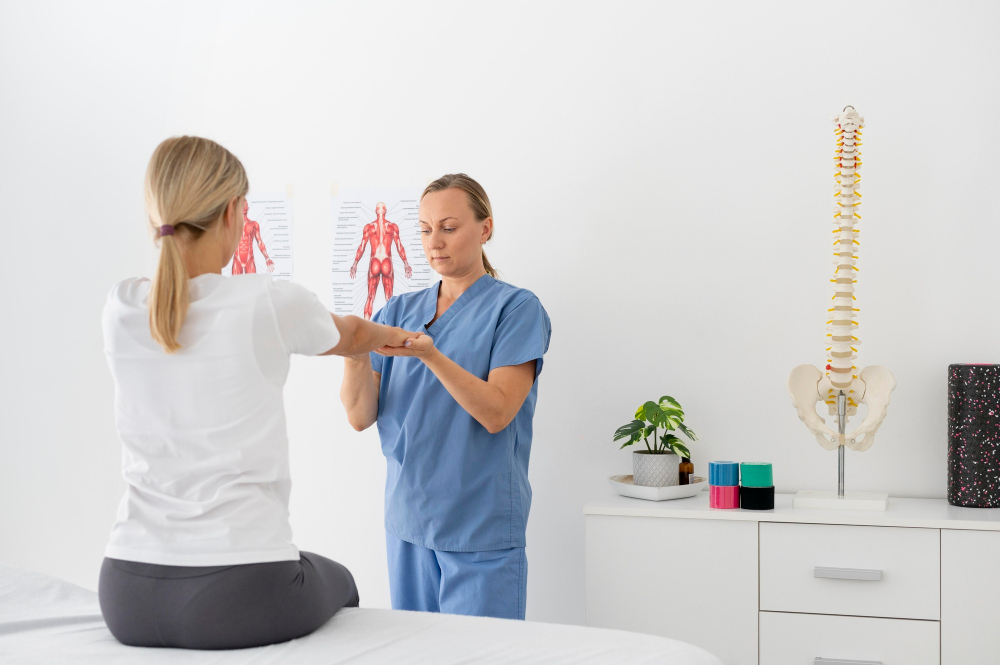Postural Tachycardia Syndrome (POTS) is a complex and often misunderstood condition that affects the body’s ability to regulate heart rate and blood flow, especially when standing up. Though it can be life-altering, POTS often remains hidden behind vague symptoms like dizziness, fatigue, palpitations, and brain fog—leading many sufferers to go undiagnosed or misdiagnosed for years.
Understanding Postural Tachycardia Syndrome: A Hidden Struggle is essential for raising awareness and compassion around this invisible illness. It primarily affects young women but can impact anyone, disrupting daily life and making even simple tasks feel overwhelming. This introduction aims to shed light on what POTS is, its causes, symptoms, and the journey many patients face to get proper diagnosis and care. By understanding POTS, we can better support those living with this silent struggle and advocate for improved research, treatment options, and public awareness.
What Is POTS?
Postural tachycardia syndrome (POTS) is a disorder of the autonomic nervous system that affects blood flow and heart rate. It is characterized by a rapid increase in heart rate—typically 30 beats per minute or more—within 10 minutes of standing, without a significant drop in blood pressure. This sudden change can cause dizziness, fainting, fatigue, and a range of other symptoms. POTS often interferes with daily activities, as standing or even mild exertion can become difficult. Though it affects both children and adults, it is most commonly diagnosed in women between the ages of 15 and 50. Diagnosis and treatment require specialized care.
The condition is defined by:
- An increase in heart rate of 30+ beats per minute within 10 minutes of standing
- No significant drop in blood pressure
- Symptoms that interfere with daily life
These cardiovascular shifts often result in a range of symptoms that can make even routine tasks extremely challenging.
Common Symptoms
People with POTS may experience a wide variety of symptoms, which can vary in intensity and frequency:
- Lightheadedness or dizziness when standing
- Fainting or near-fainting episodes
- Fatigue that doesn’t improve with rest
- Palpitations or a rapid heartbeat
- Brain fog or difficulty concentrating
- Nausea and digestive issues
- Shakiness or tremors
- Exercise intolerance
Many of these symptoms worsen upon standing or prolonged upright posture, making daily activities exhausting or even impossible.
The Struggle to Get Diagnosed
One of the most difficult parts of living with this condition is the journey to diagnosis. Because symptoms mimic those of anxiety, panic attacks, or chronic fatigue, many patients are initially misdiagnosed or dismissed.
Challenges include:
- Long delays in diagnosis (often years)
- Misunderstanding by healthcare providers
- Lack of awareness among the general public
- Emotional toll from not being believed
A proper diagnosis typically involves a tilt table test or active stand test performed by a specialist who understands autonomic disorders.
What Causes POTS?
There is no single known cause, but several triggers and underlying conditions are often associated with POTS:
- Viral illnesses (such as mononucleosis or COVID-19)
- Surgery or trauma
- Pregnancy or hormonal changes
- Autoimmune disorders
- Genetic factors or family history
- Ehlers-Danlos syndrome or other connective tissue disorders
In some cases, it may appear without a clear trigger, making it even more difficult to diagnose.
Treatment and Management
There is currently no cure for POTS, but symptoms can often be managed through a combination of lifestyle changes, physical therapy, and medications.
Lifestyle Modifications:
- Increase salt and fluid intake to support blood volume
- Wear compression garments to prevent blood pooling
- Avoid prolonged standing or hot environments
- Elevate the head of the bed during sleep
- Get adequate sleep and manage stress
Exercise and Physical Therapy:
- Begin with recumbent exercises like swimming or rowing
- Gradually increase intensity under medical guidance
- Avoid sudden changes in posture
Medications:
- Beta-blockers to manage heart rate
- Fludrocortisone to retain salt and water
- Midodrine to raise blood pressure
- Pyridostigmine to improve nerve signal transmission
Each treatment plan is individualized, as responses to medication and lifestyle changes vary from person to person.
Mental Health and Emotional Support
The emotional burden of chronic illness is significant, and this condition is no exception.
Mental health concerns often include:
- Depression or anxiety due to unpredictability
- Feelings of isolation or social withdrawal
- Frustration with physical limitations
- Grief over the loss of independence or career plans
Support from counselors, therapists, and online or local peer groups can help individuals cope with the emotional aspects of living with a chronic condition.
Diet and Nutrition Tips
What you eat can have a big impact on how you feel. People living with POTS often benefit from targeted dietary strategies.
Helpful dietary practices:
- Eat smaller, more frequent meals to avoid blood pooling in the digestive tract
- Increase electrolyte-rich fluids
- Avoid caffeine and alcohol, which can dehydrate
- Focus on whole, unprocessed foods
- Monitor carbohydrate intake, which can trigger symptoms in some individuals
Special Considerations for Children and Teens
Adolescents can also be affected by postural tachycardia syndrome, and the impact during these formative years can be especially challenging. This condition often appears around puberty, disrupting school routines, extracurricular activities, and social development. Teens may struggle with fatigue, dizziness, or concentration issues in the classroom, leading to frustration and isolation. Parents, teachers, and healthcare providers need to recognize these signs early. Support strategies like academic accommodations, scheduled rest breaks, and open communication can make a significant difference. Helping teens build self-advocacy and emotional resilience is key to managing both the physical and emotional effects of postural tachycardia syndrome.
Boosting Awareness and Research
